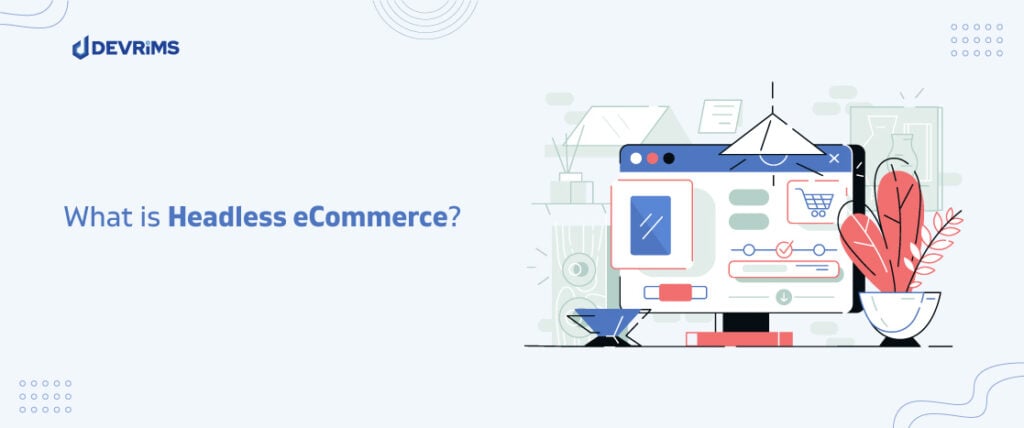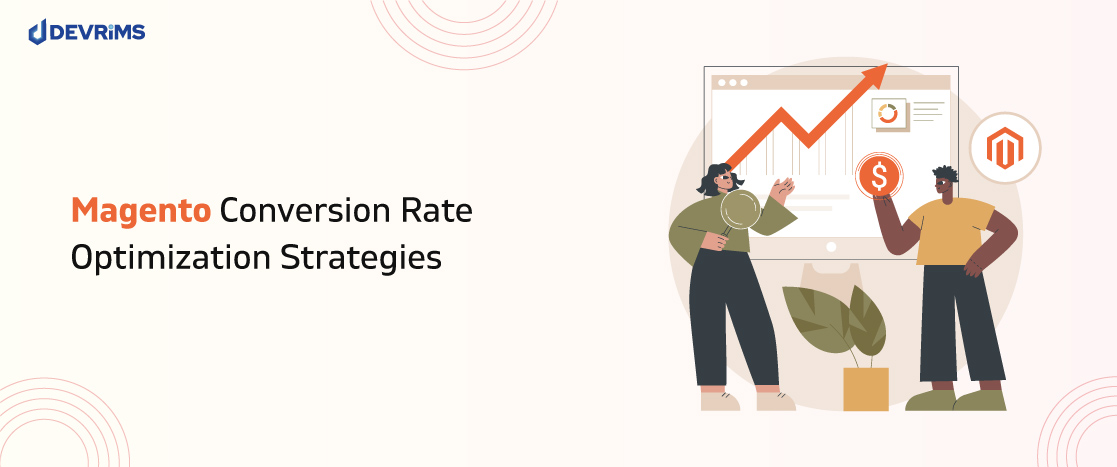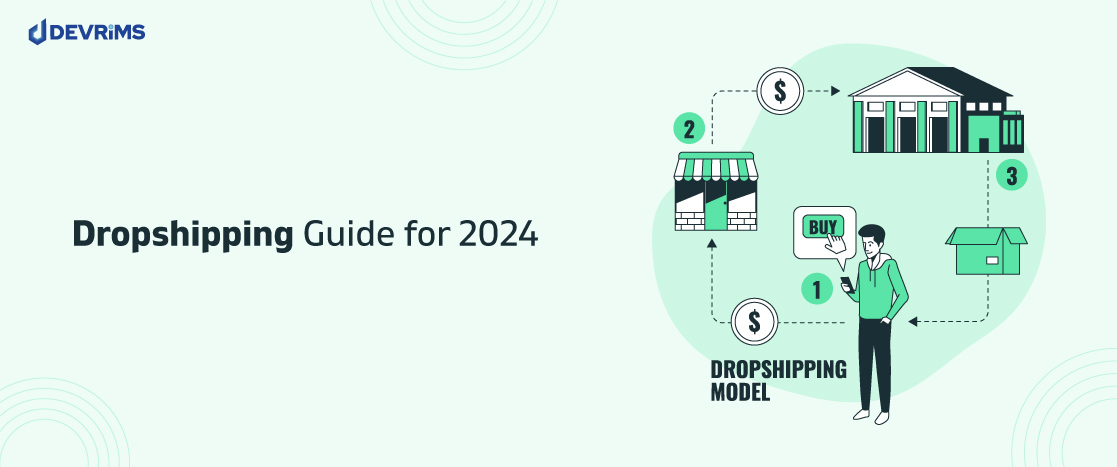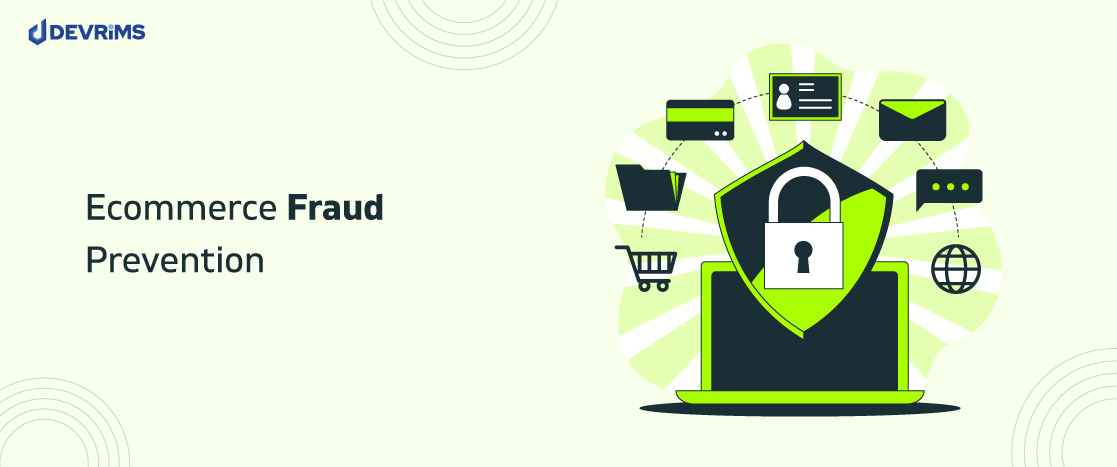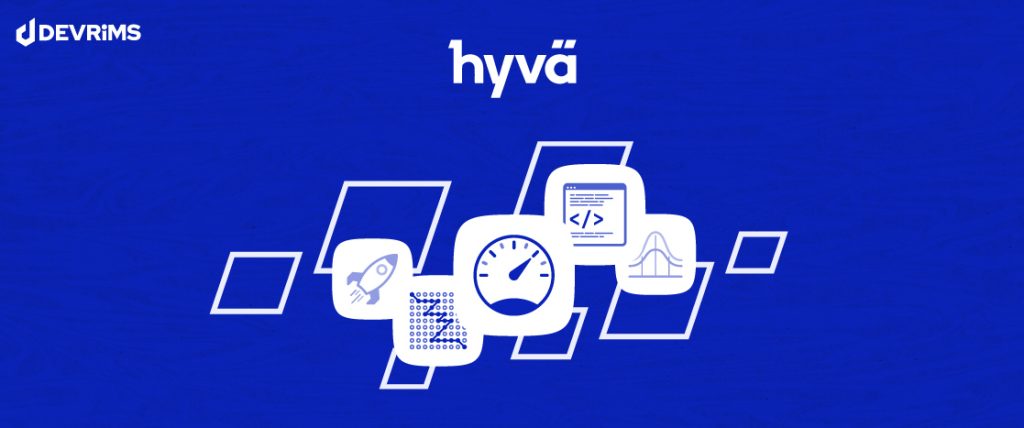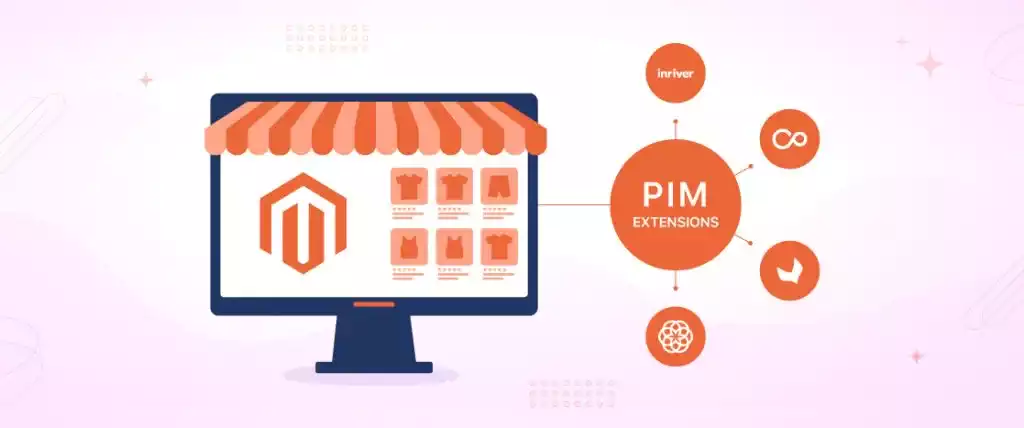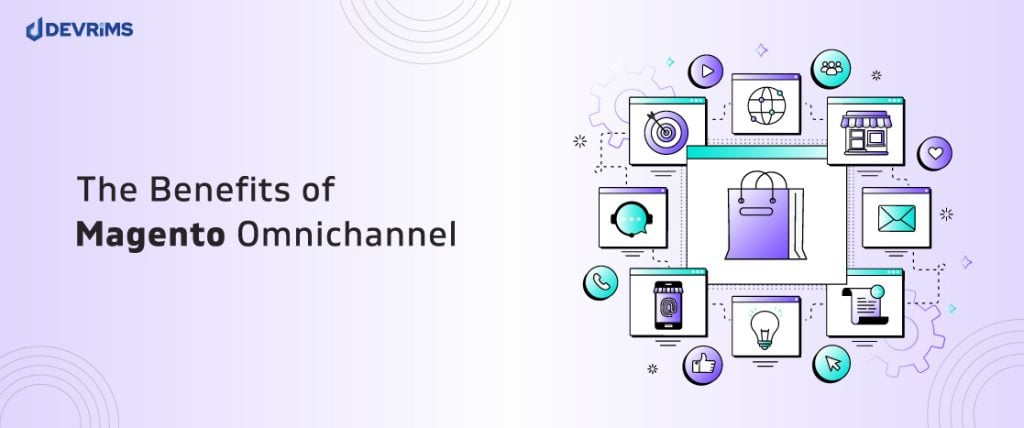The digital world is progressing quickly, and eCommerce businesses must be up-to-date with new technologies and customer expectations to stay competitive. Traditional monolithic eCommerce platforms are too rigid to allow businesses to deliver the seamless experience that customers demand nowadays. This is where headless eCommerce comes in.
Headless eCommerce divides the frontend and back end of an eCommerce platform to provide greater flexibility and innovation. Businesses can use best-of-breed solutions across channels, touchpoints, and devices to create a unified customer journey without the constraints of a monolithic system. A headless solution will be a great choice as it optimizes operations, reduces costs, and offers an always-on infrastructure to support rapidly changing business needs.
Headless eCommerce empowers brands to change quickly with the market as customers’ behavior and preferences continue to vary. Headless platforms look forward to eCommerce businesses for long-term success with the ability to incorporate new technologies as they emerge. Headless eCommerce helps businesses grow by delivering smooth shopping experiences.
What is Headless eCommerce?
Headless eCommerce is an innovative architectural approach that separates the frontend presentation layer from the backend infrastructure in an online retail platform. It divides these two components through APIs, unlike traditional eCommerce systems where the frontend and backend are combined.
How does Headless eCommerce work?
Headless eCommerce relies on APIs to enable the frontend presentation layer to communicate with the backend systems and services. When a user performs an action on the front end, such as clicking a product or making a purchase, an API call is made to the back end to retrieve data or execute processes.
For example, when a user adds an item to their cart, the frontend sends an API request to the backend commerce engine to update the cart and inventory count. The backend processes this request and sends back a response via the API, which will allow the frontend to display the updated cart.
Similarly, when a shopper enters shipping information at checkout, this data will pass through APIs to the order management system in the backend to calculate available shipping options. The options will be returned via API and rendered on the front end for the user to select.
The API-driven approach provides flexibility in adopting different technologies on both ends. The front end can leverage modern web development frameworks for seamless customer experiences, and the back end can use scalable cloud platforms and microservices.
Headless eCommerce vs Traditional eCommerce
Here are some differences between Headless eCommerce vs Traditional eCommerce.
Traditional eCommerce platforms provide an all-in-one solution; the backend and frontend are coupled in a single system. This monolithic architecture makes it easy to start quickly but harder to scale and innovate in the long run. It often requires extensive rework across the entire tech stack if you want to make changes in one platform component.
Whereas Headless eCommerce separates the frontend and backend. The backend focuses solely on core commerce functionalities like inventory, orders, and payments. It can be built using languages like PHP, Node.js, and Python. The front end consumes backend services through APIs and can be built using any technology like React, Vue, Angular etc. This modular approach provides more flexibility and control.
A key advantage of Headless is that the front end can be optimized for each touchpoint – web, mobile, wearables, etc. For example, product pages on the website can feature rich media and reviews, while the mobile app provides a stripped-down catalog for faster browsing. The backend remains unchanged, delivering data through APIs to any front end.
Additionally, Headless allows frontend innovation without backend dependency. New JavaScript frameworks and CSS tools can be adapted to create cutting-edge user experiences. Doing experiments with emerging technologies is much easier since only the front end needs to evolve.
Brands can test new designs, workflows, and features on specific customer segments for faster feedback. The modular architecture of headless eCommerce ensures frontend changes have minimal backend impact. As a result, Headless allows for rapid iteration and innovation.
That means Headless eCommerce provides flexibility, optimization across touchpoints, frontend independence, and agility that traditional coupled architectures cannot match. While Traditional platforms offer a quicker initial setup, Headless is a better fit for long-term growth.
Benefits of Headless eCommerce
Headless eCommerce releases brands from the constraints of monolithic commerce platforms. It unlocks new levels of flexibility, innovation, and optimization by decoupling the front end and backend. Here are some of the key benefits of Headless eCommerce:
Omnichannel Personalization
Businesses can build customized frontends tailored to each touchpoint: web, mobile, in-store, etc., with headless eCommerce. The backend displays product data via APIs, which frontend apps consume to render personalized experiences. For example, web and mobile sites can feature advanced recommendations while in-store focus on promotions and inventory.
Frontend Independence
The frontend codebase is entirely separate from the backend. This allows developers to choose the best frameworks like React, Vue, and Angular to create snappy, interactive user experiences without limiting themselves to backend dependencies. Teams can also iterate rapidly on the front end without worrying about backend migrations.
Backend Stability
The backend remains unchanged even if the front end changes. All the core commerce functionalities like cart, checkout, payments, and fulfillment are abstracted in a headless backend. This means zero downtime for crucial business operations when launching new frontend experiences.
Progressive Enhancement
New features can be incrementally added to frontends with headless while the core backend stays stable. For example, a new high-touch mobile app experience can be launched to supplement an existing website. This progressive enhancement over time is complex with monolithic platforms.
Cloud and Headless are the Best Combination
Combining headless commerce with cloud-native SaaS backends like Commercetools or Elastic Path unlocks new flexibility, scalability, and resilience levels. The entire commerce stack can now quickly expand or contract based on seasonal catalog and traffic changes.
Headless eCommerce Platforms
Many Headless eCommerce Platforms are available in the market, and we have mentioned the best seven of them.
Magento

Magento has introduced new REST and GraphQL APIs to enable headless commerce. Storefronts can be decoupled from Magento’s backend, which provides enterprise-grade functionalities out of the box. The APIs enable easier integration of Magento with modern frontends and external commerce systems. Build your headless Magento store on Magento hosting by Devrims.
Commercetools
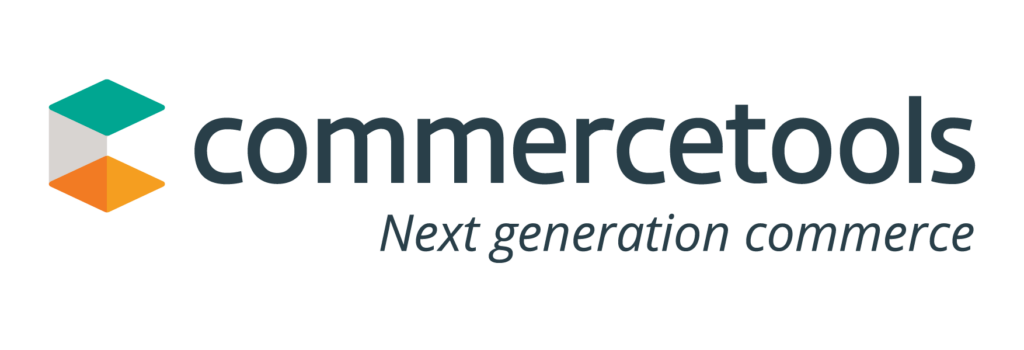
Commercetools is a leading headless commerce platform built from the beginning using cloud-native architecture. Its powerful APIs and SDKs allow businesses to build customizable frontends using modern frameworks like React and Vue.js. Commercetools handles complex commerce functionalities like cart, checkout, payments, and subscriptions in the backend. It’s ideal for large enterprises looking to run long-term commerce stacks.
Saleor

Saleor is an open-source, GraphQL-based headless platform. It provides a customizable storefront API and dashboard out of the box to manage products, orders, etc. Saleor makes it easy to get started with headless eCommerce without significant backend development. It can also scale to enterprise-level workloads.
Vue Storefront

Vue Storefront is another open-source headless frontend built with Vue.js. It connects out of the box with eCommerce backends like Magento and Shopify. The declarative approach of Vue Storefront makes building high-performance shopping experiences simple yet customizable. It’s a good choice for the progressive enhancement of existing commerce platforms.
Spryker

Spryker is a composable eCommerce platform with headless functionalities. It provides powered commerce APIs and SDKs to build frontends using React, Vue, etc. Spryker makes it easy to reuse commerce functionality across channels. Businesses can quickly scale and adapt their stack by adding new features with its composable architecture.
Elastic Path

Elastic Path is a cloud-native, API-first headless ecommerce platform. It focuses on B2B use cases and complex product catalogs. Elastic Path provides a graphQL API out of the box to build customizable storefronts. It also offers advanced master data management and robust B2B commerce features.
Headless eCommerce Use Cases
Here are some examples of innovative companies that use headless eCommerce architecture:
Personalized Media Company
A media company offering print and digital subscriptions had legacy eCommerce systems tied to their print production. They built a customized subscription portal for digital content by implementing a headless ecommerce architecture. Now, subscribers can purchase and manage their digital subscriptions independently without being limited by print systems. The headless approach provides greater flexibility to test and optimize digital subscription funnels.
Automotive Marketplace
An online automotive marketplace needed to combine various dealer inventories into a single search and ecommerce experience. Their legacy systems made it difficult to merge catalog data. They could aggregate dealer inventory via APIs into a unified marketplace site with a headless ecommerce system. Customers can now search nationwide inventory and purchase vehicles online. The headless architecture gave freedom to create a seamless car buying experience.
Headless Pop-Up Stores
A clothing retailer wanted to launch temporary pop-up storefronts rapidly during the holiday shopping season. They built customizable pop-up digital storefronts that pull live inventory data via APIs with a headless ecommerce platform. The temporary sites provide a unified branded experience while avoiding lengthy IT projects required for monolithic systems. Headless commerce enabled the agile launch of pop-up stores.
IoT Appliance Company
An appliance company developed a smart refrigerator with a touchscreen UI. They wanted customers to be able to purchase groceries and other items directly through the refrigerator screen. The appliance UI was decoupled from the commerce engine using a headless approach. The frontend fridge software could focus solely on the embedded user experience, while the headless backend handled all commerce transactions and inventory.
B2B Partner Sites
An industrial manufacturer wants to enable distributors and retailers to launch customized online storefronts powered by their catalog data. A headless ecommerce backend displays product data via APIs while letting partners build customized B2B buying portals and integrate them with existing tools.
Headless eCommerce Hosting Requirements
You must consider hosting needs for both front and backend while implementing a headless ecommerce architecture.
The frontend needs high-speed CDN to cache static assets globally, cloud infrastructure with a geographic location close to users, and auto-scaling functionalities to handle high traffic.
The backend needs uptime, reliability, caching layers, auto-scaling, and analytics monitoring.
A hosting architecture that combines optimized CDN delivery, elastic scaling, and high availability across cloud data centers is essential for ensuring a fast, flexible, headless eCommerce store. Careful planning of hosting and the strength of managed cloud services can help headless commerce teams focus on creating great customer experiences.
We recommend Managed Cloud Hosting for Headless eCommerce as it fulfills all the requirements and provides you with a seamless solution.
Conclusion
The eCommerce world is changing rapidly with the addition of new technologies, customer expectations, and constant innovation. Online businesses can no longer rely on rigid platforms to compete effectively in this era. That is why they need to go for Headless Solutions to provide their customers with a great experience.
Headless commerce has emerged as a strategic architecture that empowers differentiation. Headless lets brands delight customers on any channel by decoupling the frontend experience layer from backend commerce functionality. Developers gain the freedom to use best-of-breed tools and frameworks that unlock creativity.
However, the technology is just one piece of the puzzle. Building a successful headless commerce business requires advanced teams, processes, and culture for the agile era.




